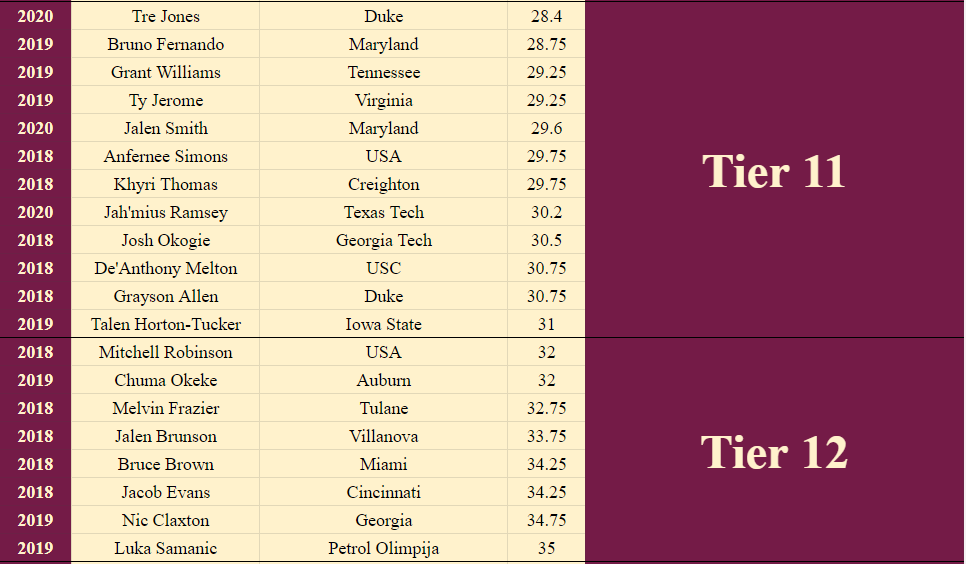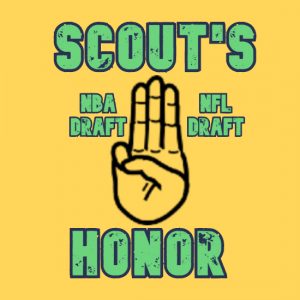The 3-Yr Rolling Mock Draft is a concept that involves combining the past three draft classes (2018-2020) into a singular pool, and using a series of highly reputable mock drafts to get an average ranking for each player within their respective class. By comparing players with similar average rankings across different draft classes, we can examine the relative strength or weakness of each given draft.
The following mock drafts are aggregated into this ranking:
-Sam Vecenie via The Athletic (published 2/13)
-Jeremy Woo via Sports Illustrated (published 2/12)
-Jonathan Wasserman via Bleacher Report (published 2/7)
-Jonathan Givony via ESPN (published 2/16)
-tankathon.com (as of 2/9)
Not all players are given a ranking in each mock draft; for unranked players, a dummy score is given. In first-round only mock drafts (30 picks), the dummy score is 45, and for full two-round mock drafts (60 picks), the dummy score is 75.
After average rankings are calculated, the players are sorted by rank, and subjectively split into tiers. While the methodology is subjective, it is done by manually observing clusters in the data and splitting tiers where it appears a new cluster begins. In the future, I hope to do this more scientifically through a clustering algorithm.
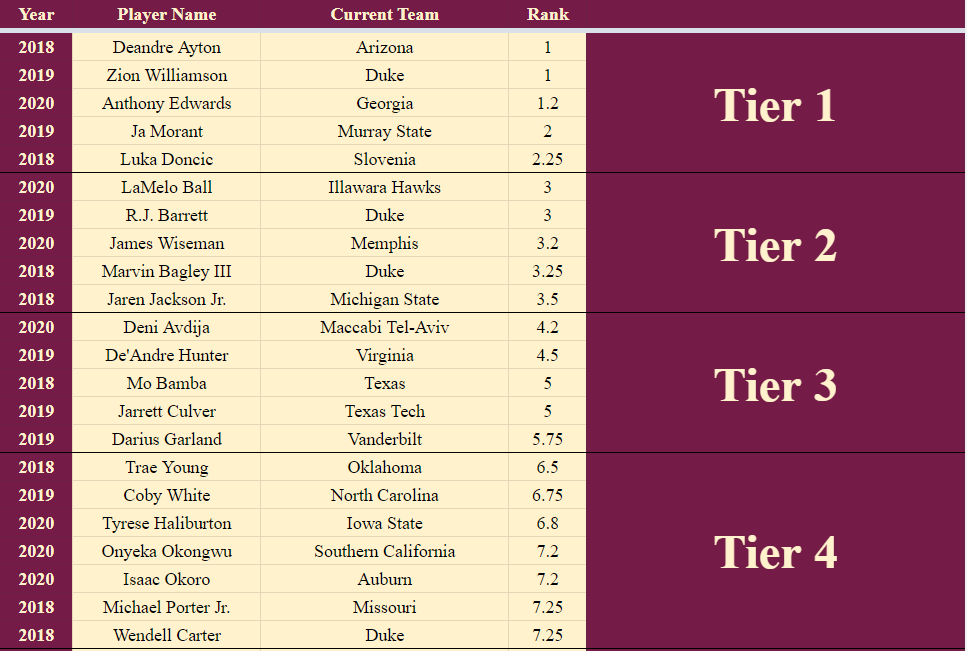
Not much has changed at the top, other than the precipitous plummet of Cole Anthony out of the top four tiers and into the Cam Reddish range… ouch.
It is clear that the top-level decision makers are trusting proven production over theoretical potential at the top of the draft this year, at least outside of Anthony Edwards. (who has still produced, just not consistently.) Tyrese Haliburton, Onyeka Okongwu, and Isaac Okoro are guys who profile as potentially great role players, with upside to really blow people away, but less of a clear path to stardom than would normally be expected with a top-10 pick. This safer approach seems smart, and certainly contrasts with past decision making, at least to an extent.
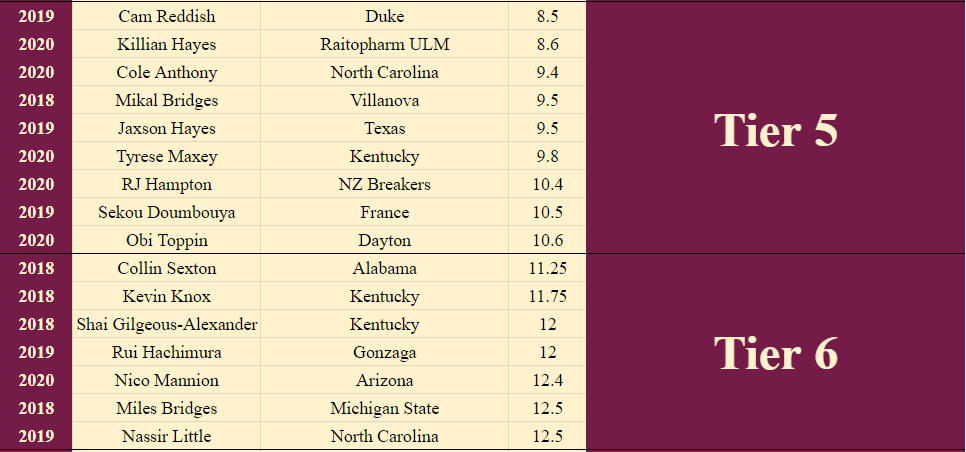
Seeing Cam Reddish above Cole Anthony has got to be striking for many draft followers. I have to say, I have been rather stunned to see the demise of Cole Anthony borne out in such stark fashion on such high-profile mock drafts. Wasserman and Givony, quite possibly the two most reputable NBA “draft gurus” on the web, ranked Cole at 11th and 12th respectively – barely a lottery pick!
I find it hard to believe there are ten players in this draft with greater upside than Cole Anthony, and while his play hasn’t been quite up to his pedigree, I struggle to see the logic in picking Onyeka Okongwu or Isaac Okoro (both players I absolutely adore, and have prior to this season) over a potential superstar in Cole. And at the end of the day, that must be where the contention begins and ends. It appears several NBA GM’s are out on Cole Anthony as a theoretical NBA superstar, at least on their team. I can’t say I agree, but the crowd-sourced opinion of highly-ranking NBA executives is slightly more valuable than my hunch. As such, it seems time to concede that Cole is no longer the surefire Top-5 prospect he appeared coming into the season.
At the same time, a drop in draft stock may be a blessing in disguise for Cole Anthony. In most iterations of my mock draft, I have projected the NY Knicks to draft Anthony in the top 5, bringing the prodigal son home to New York and consigning Cole to the fate that has befallen R.J. Barrett and Kevin Knox before him. If Cole were to drop out of the top-10, there is a good chance he could end up on a team like Portland or San Antonio where he has a much better chance of maximizing his potential as a player.
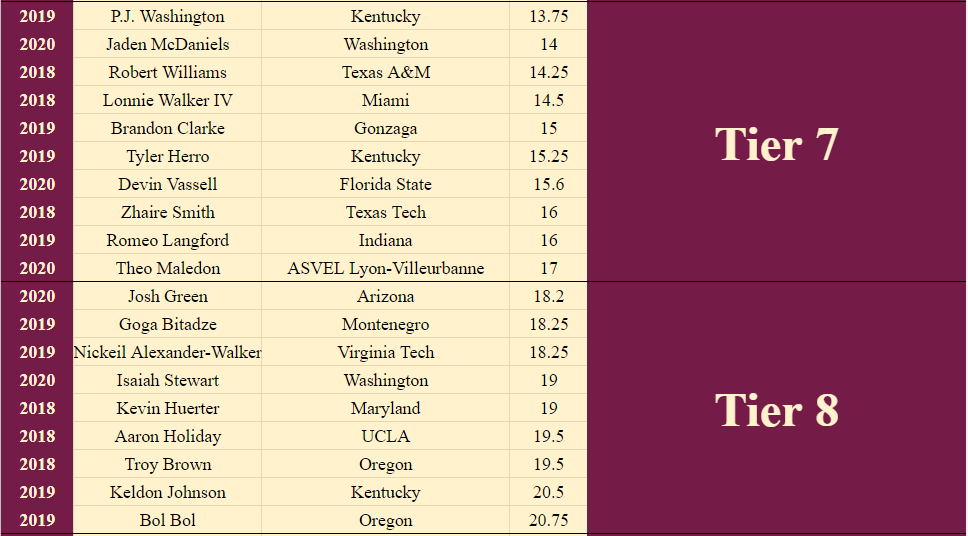
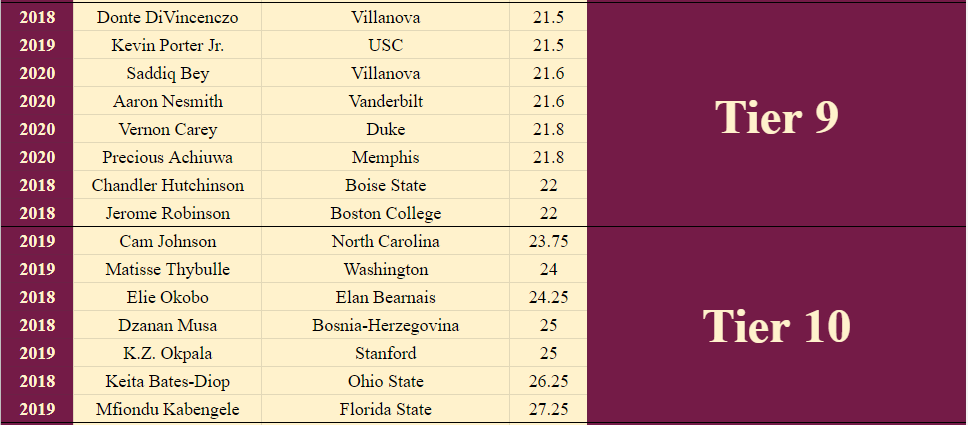
The story of this snapshot? Saddiq Bey.
To be honest, I don’t think 21 is nearly high enough for Bey. This guy is pretty likely the second-best wing prospect in the draft behind Isaac Okoro (counting Edwards as a guard) and I really just don’t care that he’s turning 21 in April. A 21-year old, 6’8 wing/forward is generally going to be incredibly raw at the NBA level, and Bey is certainly further along the developmental curve than most wings taken in the 1st round. De’Andre Hunter was a better shot creator and slightly better on-ball defender than Bey, but can you really tell me Hunter is a lock to have a greater career than Bey? I certainly can’t. Josh Jackson was ten times the athlete that Bey is, but do you really need to be an elite NBA athlete on the wing to be a good to great role player? The NBA has a history with big, athletic wing players who project as three-and-D forwards, and let me tell you it is a long history, paved by Micheal Kidd-Gilchrist and Marquese Chriss and Derrick Williams and Wesley Johnson and so many more.
What if, instead of focusing too much on top-end athleticism, half of which can’t be functionally applied to the game of basketball without incredible instincts and awareness, we tried actually evaluating the guy on the floor in front of us, and imagine what he may look like on various modern NBA teams? Because I think when you do that, Saddiq Bey starts to look more and more like a top-15 pick, if not even higher.
